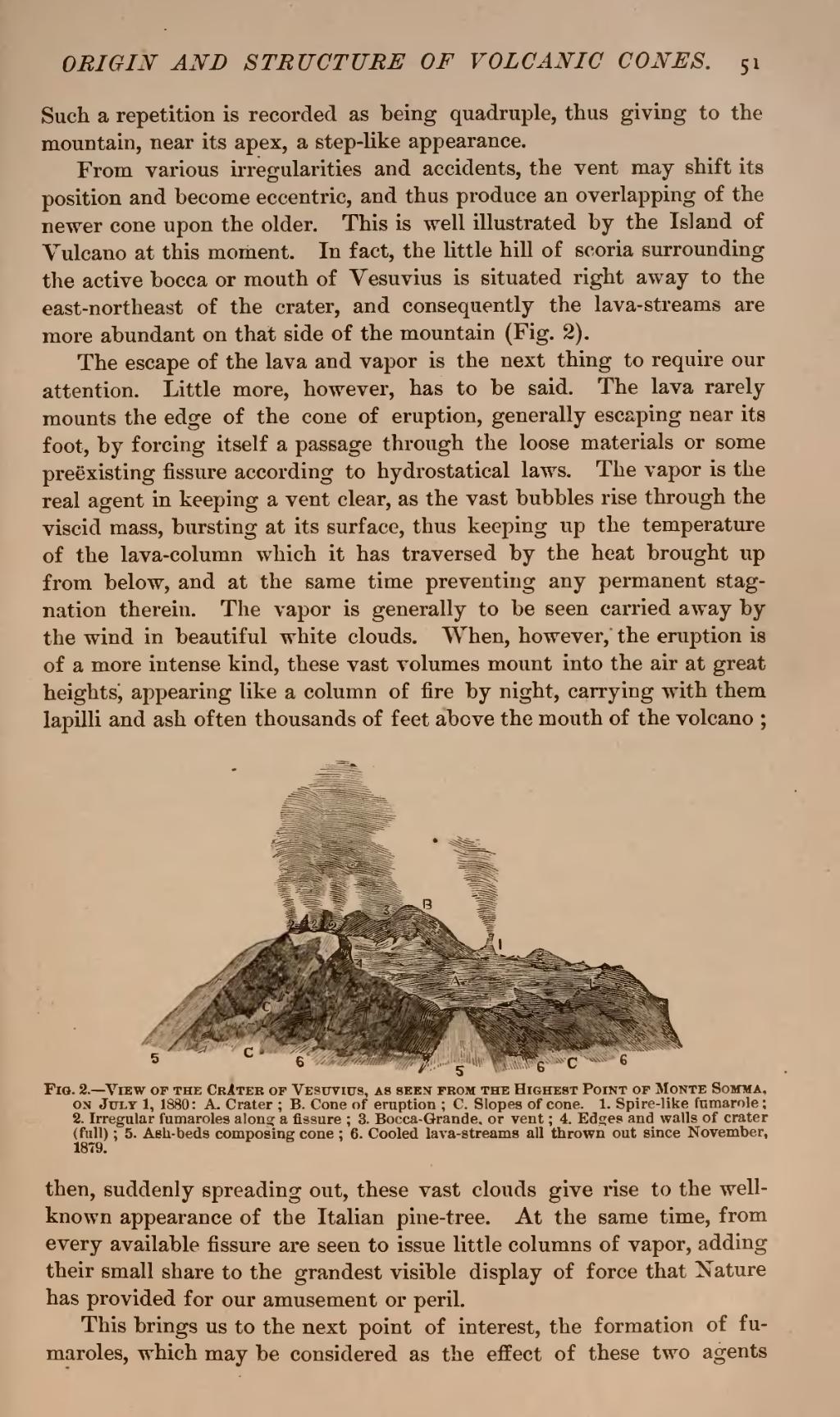Such a repetition is recorded as being quadruple, thus giving to the mountain, near its apex, a step-like appearance.
From various irregularities and accidents, the vent may shift its position and become eccentric, and thus produce an overlapping of the newer cone upon the older. This is well illustrated by the Island of Vulcano at this moment. In fact, the little hill of scoria surrounding the active bocca or mouth of Vesuvius is situated right away to the east-northeast of the crater, and consequently the lava-streams are more abundant on that side of the mountain (Fig. 2).
The escape of the lava and vapor is the next thing to require our attention. Little more, however, has to be said. The lava rarely mounts the edge of the cone of eruption, generally escaping near its foot, by forcing itself a passage through the loose materials or some preëxisting fissure according to hydrostatical laws. The vapor is the real agent in keeping a vent clear, as the vast bubbles rise through the viscid mass, bursting at its surface, thus keeping up the temperature of the lava-column which it has traversed by the heat brought up from below, and at the same time preventing any permanent stagnation therein. The vapor is generally to be seen carried away by the wind in beautiful white clouds. When, however, the eruption is of a more intense kind, these vast volumes mount into the air at great heights appearing like a column of fire by night, carrying with them lapilli and ash often thousands of feet above the mouth of the volcano;

then, suddenly spreading out, these vast clouds give rise to the well-known appearance of the Italian pine-tree. At the same time, from every available fissure are seen to issue little columns of vapor, adding their small share to the grandest visible display of force that Nature has provided for our amusement or peril.
This brings us to the next point of interest, the formation of fumaroles, which may be considered as the effect of these two agents

